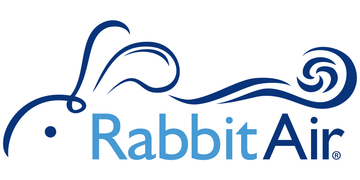
Creating a clean and inviting office environment goes beyond aesthetics and ergonomics; it also involves ensuring the air is as fresh and pure as possible.
With various methods available to enhance the air environment, it can be challenging to determine the most effective approach. This article delves into the best strategies for purifying office air, offering insights into various solutions that can help you achieve a healthier and more pleasant workspace.
Identifying Common Office Air Pollutants
The first step in purifying office air is to understand what contaminants might be present. Common pollutants in office environments include dust, volatile organic compounds (VOCs), and allergens such as pollen and pet dander.
These pollutants often originate from everyday office activities and items: dust accumulates from foot traffic and paper, VOCs are emitted from office equipment like printers and photocopiers, and allergens can enter through open windows or be carried in on employees' clothing.
Using Air Purifiers to Enhance Air Quality
One of the most effective ways to purify office air is by using air purifiers. These devices work by trapping and capturing airborne pollutants, ensuring that the air remains fresh and free of irritants. Air purifiers come in various types, including those with HEPA filters, which are known for their ability to trap particles as small as 0.3 microns.
Activated carbon filters are also popular, particularly for capturing odors and VOCs, making them ideal for offices with heavy machinery use.
For example, Rabbit Air's MinusA2 and A3 models are equipped with customized filters designed to address specific office environments. Their Toxin Absorber filters are particularly effective at capturing VOCs from sources such as photocopiers, printers, and new furniture or carpets.
Some advanced models even include UV light or ionizers, providing an additional layer of purification by targeting bacteria and viruses.
By incorporating an air purifier for your office, you can create a more inviting and comfortable environment for employees and visitors alike.

Role of Plants in Air Purification
While air purifiers are highly effective, incorporating indoor plants into the office can further enhance air quality. Plants are natural air purifiers; they capture certain pollutants through their leaves and root systems and produce oxygen, which helps to keep the air fresh.
Some plants, such as spider plants, peace lilies, and snake plants, are particularly effective at purifying air, making them suitable choices for offices. Additionally, plants can improve the office's aesthetic appeal, creating a more pleasant and inviting atmosphere.
Ventilation Strategies for Fresh Air Circulation
Ventilation plays a critical role in maintaining a fresh and purified air environment in offices. Proper ventilation helps to circulate air, reducing the concentration of indoor pollutants and bringing in fresh air from outside.
This can be achieved by opening windows when weather permits, allowing natural airflow, or using HVAC systems designed to improve air circulation. Installing fans can also help distribute air more evenly throughout the office space. Ensuring that ventilation systems are regularly maintained and cleaned is vital, as clogged filters and ducts can harbor dust and other contaminants.
Humidifiers: Complementing Air Purifiers
While air purifiers focus on trapping pollutants, humidifiers can complement this by ensuring the air remains comfortably humid. Dry air, common in air-conditioned or heated offices, can lead to discomforts such as dry skin, irritated eyes, and respiratory issues.
Humidifiers add moisture to the air, helping to maintain optimal humidity levels, which can prevent these issues. This is particularly important during winter when heating systems tend to dry out the air. Using both air purifiers and humidifiers together can provide a balanced approach to air quality management, addressing both purification and humidity needs.
Regular Cleaning and Maintenance
In addition to using devices like air purifiers and humidifiers, regular cleaning and maintenance are essential for keeping the office air environment clean. Dusting surfaces, vacuuming carpets, and cleaning office equipment can prevent the buildup of dust and other pollutants. It’s also important to ensure that HVAC systems and air purifiers are maintained and their filters replaced regularly to maintain their efficiency.
Encouraging employees to keep their personal workspaces tidy and to avoid using heavily fragranced products can also contribute to a cleaner air environment. Try adopting a routine cleaning schedule as well, to guarantee a healthier environment, don't just rely on the cleaning staff.
Conclusion
Purifying the air in an office environment requires a multi-faceted approach. Utilizing air purifiers, incorporating indoor plants, ensuring proper ventilation, and using humidifiers can collectively improve air quality, making the office a more comfortable and productive place to work. Regular cleaning and maintenance are also key to keeping pollutants at bay.




